
White sourdough loaf
- Published: 8 Mar 16
- Updated: 18 Mar 24
Baking the perfect homemade white sourdough loaf can be a challenge. Use our recipe to make your own starter and pre-ferment before using it to make your bread.
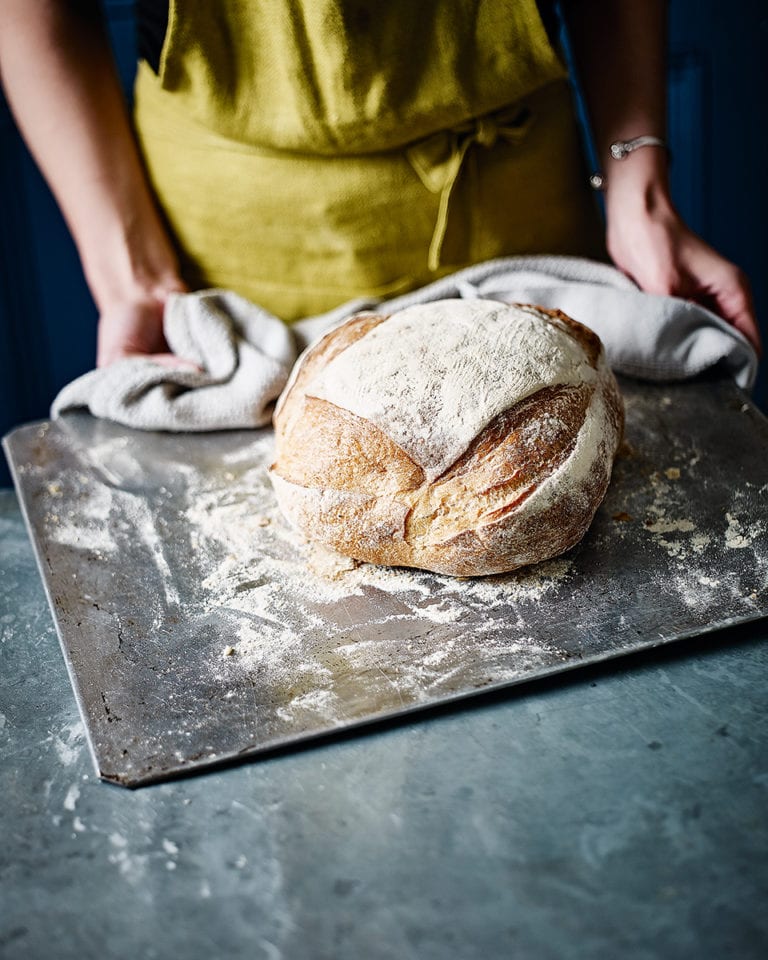
If you’re new to sourdough, make sure you check out our handy guide to making sourdough at home, which has all the tips and tricks you’ll ever need.
-
Makes 1 large loaf (about 20 slices)
-
Hands-on time 50 min, oven time 30 min, plus rising, resting and 2½-6 hours (or overnight) proving
Ingredients
- 500g organic strong white bread flour, plus extra to dust
- 15g fine sea salt
- 300ml warm water
- 150g pre-ferment (see our guide here)
Method
- Combine the flour and salt in a mixing bowl. Mix the water and pre-ferment in a large measuring jug. Pour the wet mix into the flour, then use a wooden spoon or dough scraper to bring the dough together, making sure all the flour is worked in. The dough will be quite shaggy.
- Cover the bowl with an upturned bowl or shower cap and leave for 10 minutes in a warm place. Next, pinch up a small portion of the dough from the side, stretch it up and over, then press it into the other side of the dough. Pinch another piece next to where you grabbed the first and repeat this stretch-and-fold another 6-8 times, working your way around the dough, which will become smooth and more firm as the gluten develops.
- Rest the dough for 10 minutes more, then repeat the stretch-fold 8-10 times as in step 2. Repeat the whole stretch-fold process twice more (you might need to stretch-and-fold fewer times if the gluten develops too quickly), then after the fourth time, leave the dough in a warm place to rise for 1 hour, lightly covered with an upturned bowl/clean shower cap.
- Tip out the dough onto a floured work surface and shape into a thick disc. Line a proving basket or colander with a clean tea towel or proving linen (also called a couche). If using a proving basket, you don’t have to line it with a cloth, but you’ll need to generously flour the basket to prevent sticking.
- Generously flour the proving cloth/basket and put in the dough. Sprinkle more flour on top, then leave in a warm room to prove. It will take 2½-6 hours, depending on the temperature and how active the starter is. The dough is ready when it springs back when gently pressed, looks puffy and has increased in size. (You can also leave it in the fridge to prove slowly overnight.)
- For the last 30 minutes proving, heat the oven to its highest temperature. Heat a roasting tray
in the bottom of the oven and a baking sheet on the middle shelf. - Remove the hot baking sheet, sprinkle generously with flour, then gently invert the dough from the basket onto the sheet and carefully remove the cloth. Using a baking razor or sharp serrated knife, slash the top of the loaf 4 times.
- Put the bread in the oven and turn down the temperature to 240°C/ 220°C fan/gas 9. Pour a cupful of water into the bottom tray (this will create steam, which will help the bread rise and form a thick crust). Bake for 30-35 minutes until golden brown. Tap the bottom of the loaf to see if it’s ready – it should sound hollow (if not, bake for 5-10 minutes more). Cool on a wire rack, then slice.
- Recipe from January 2016 Issue
Nutrition
Per slice
- Calories
- 106kcals
- Fat
- 0.4g fat (0.1g saturated)
- Protein
- 2.9g protein
- Carbohydrates
- 22.2g carbs (0.2g sugars)
- Fibre
- 1.1g fibre
- Salt
- 0.7g salt
delicious. tips
When scoring the dough, don’t press the knife down – gently pull it through the dough. The blade must be very sharp – bread razors are best (from bakerybits.co.uk or thebertinetkitchen.com, where you’ll also find proving baskets, linen and dough scrapers). Using a clean, elasticated shower cap is an easy way to cover bowls.
Freeze the baked loaf for up to 1 month, wrapped in cling film. Defrost, then warm in a low oven. Or slice before freezing, then toast frozen slices when needed.
Buy ingredients online
Rate & review
Rate
Reviews
Share a tip
Subscribe to our magazine
Food stories, skills and tested recipes, straight to your door... Enjoy 5 issues for just £5 with our special introductory offer.
Subscribe
Unleash your inner chef
Looking for inspiration? Receive the latest recipes with our newsletter

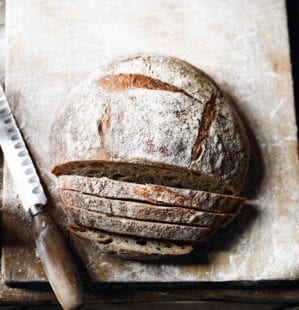

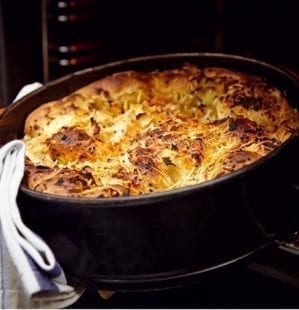
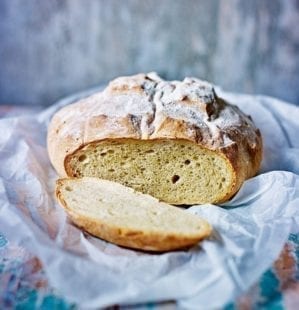
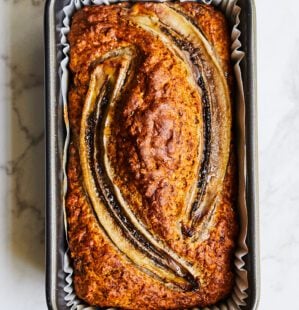
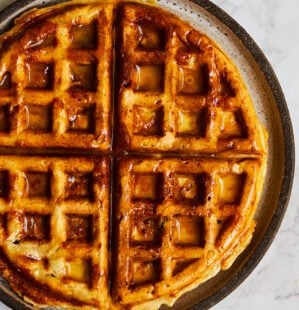
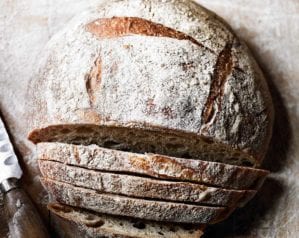
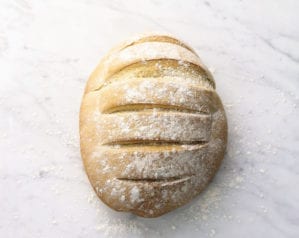
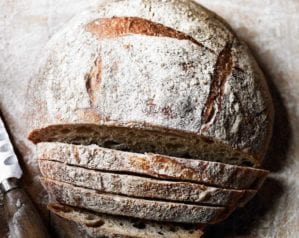




To make wholegrain loaf, can you just swap the flour and flollow the receipe as is?